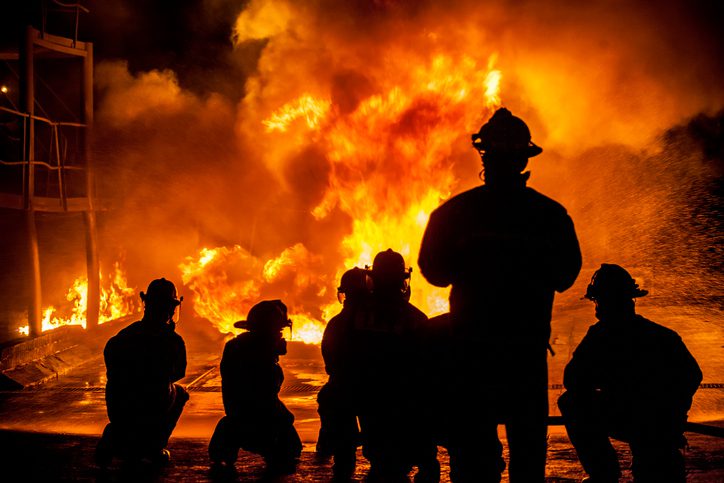How to mitigate the growing risk of waste and recycling fires

Authored by AXA XL Senior Consultant, Property & Casualty, Environmental, Josh Wilson
In March 2022, a waste facility in York County, Pa. was almost completely lost to a fire caused by a rechargeable lithium-ion battery. Thankfully no one was injured, but the fire destroyed all of the facility’s controls and equipment. It took a year for the company to rebuild and reopen.
In June 2023, a fire broke out at a Michigan waste management facility so fierce that hydrants outside the building could barely provide enough water to fight the flames. It took firefighters more than eight hours to extinguish the fire.
The same month, a three-alarm fire broke out at a recycling center in Philadelphia, requiring about 120 firefighters to control the blaze.
In all, there were more than 300 fires at waste and recycling plants in the U.S. and Canada in 2022, more than any previous year.
Common causes of fire in waste management
What’s fueling this uptick? Here are three of the most common causes of waste and recycling center fires:
1. Improper battery disposal
Lithium batteries – particularly lithium-ion batteries – are prone to combustion when overheated and can explode and ignite if crushed. These should be dropped off at designated collection sites, not thrown into the regular trash or recycling bin – but that doesn’t always happen. A jostle in the garbage truck or exposure to heat in the storage facility can quickly cause a massive fire.
2. Unsafe storage of flammable materials
With vast amounts of paper, cardboard and other combustible materials, waste and recycling facilities are essentially big tinder boxes. Any wiring or electrical equipment used at a plant can be an ignition source. Failure to properly monitor equipment for hot spots and implement fire prevention programs can result in a catastrophic loss.
3. Transit of “hot loads”
In the waste management industry, a “hot load” refers to “solid waste that is smoking, smoldering, emitting flames or hot gases or otherwise indicating that the waste is in the process of combustion or close to igniting.” This most often happens when hazardous materials are disposed of improperly. These “hot loads” account for about 25% of waste vehicle fires. Not only do these fires destroy expensive pieces of equipment, but they directly endanger the lives of the driver and others on the road.
How to mitigate the risk
Fires result in costly property and general liability claims for waste management and recycling companies. From property damage and business interruption to environmental damage, threat of bodily injury and potential loss of life, these incidents have severe and far-reaching consequences.
But prevention is possible and necessary. Through regular site assessments and vehicle inspections, monitoring and maintenance of electrical equipment, advanced hot spot detection, hot work programs, and fire suppression systems, these fires can be avoided or at the very least identify risks earlier. Waste management firms also need to provide training for drivers and facility staff on managing hot loads.
AXA XL’s environmental risk team helps clients to identify their exposures and create specific mitigation strategies – and ensure proper coverage if a loss does happen. Their latest Environmental Risk Bulletin dives deeper into the causes of fires in waste management, and what steps companies can take today to reduce their exposure. If you work in waste management, download the bulletin to learn more about how to make your facility, your fleet, and your staff safer.






